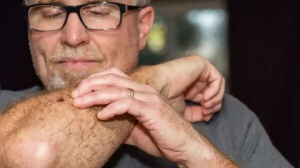Prediabetes is characterized by higher than normal blood sugar levels, a state that precedes the onset of type 2 diabetes. The good news is that early detection and intervention through diet and exercise can often reverse the condition within months. While a blood test remains the definitive diagnostic tool, your body may exhibit certain telltale signs indicating elevated blood sugar. Here are five such indicators:
One of the primary symptoms of elevated blood sugar is increased thirst. When blood sugar levels surge, the kidneys attempt to filter out the excess glucose, leading to more frequent urination. This, in turn, can cause dehydration.
A vicious cycle can then develop, where dehydration leads to persistent thirst, even with regular water intake. If you find yourself constantly reaching for a drink and making frequent trips to the bathroom, it could signal rising blood sugar levels.
Feeling tired despite adequate rest could be another warning sign. High blood sugar can disrupt how your body utilizes glucose for energy.

When your cells don't receive sufficient glucose, feelings of weakness and fatigue can arise. This fatigue differs from typical tiredness, as it persists even after rest. Difficulty concentrating or staying alert throughout the day may also be experienced. Constant fatigue, including daytime sleepiness, warrants a medical checkup.
Prediabetes can sometimes manifest on the skin. Dark, thick, and velvety patches may appear on the back of the neck, under the arms, or around the groin. This condition is known as acanthosis nigricans.

These dark patches are caused by high insulin levels in the blood, a common occurrence in prediabetes. If you observe these skin changes, particularly if they develop rapidly or worsen, it could indicate your body's struggle to regulate blood sugar.
Elevated blood sugar can impair the body's ability to heal wounds efficiently. If even minor cuts or bruises take an extended period to heal, it could be a sign of prediabetes.
When blood sugar is high, the immune system's functionality is compromised, and blood flow to the skin may be reduced. This delays the healing process and elevates the risk of infections. Wounds that are slow to heal should prompt a medical evaluation.
Individuals with prediabetes often experience more frequent hunger, even after meals. This occurs because the body's cells are not receiving sufficient glucose for energy, leading the brain to signal for more food intake, regardless of actual hunger.
This heightened hunger can result in overeating and weight gain, further complicating blood sugar control. Persistent hunger or cravings, especially for sugary and starchy foods, might be the body's way of signaling an underlying issue.
Newer articles
Older articles
 Rishabh Pant: Greg Chappell Hails India Star as Cricket Revolutionary
Rishabh Pant: Greg Chappell Hails India Star as Cricket Revolutionary
 Google Maps to Boost Navigation Accuracy with Fused Orientation Provider API
Google Maps to Boost Navigation Accuracy with Fused Orientation Provider API
 Gavaskar Calls for Kuldeep Yadav's Inclusion in Second Test Amid Bumrah Fitness Concerns
Gavaskar Calls for Kuldeep Yadav's Inclusion in Second Test Amid Bumrah Fitness Concerns
 Global Vaccination Rates Plunge: Millions of Children Now Vulnerable to Preventable Diseases
Global Vaccination Rates Plunge: Millions of Children Now Vulnerable to Preventable Diseases
 Skin Cancer Alert: How to Identify Suspicious Moles and Early Warning Signs
Skin Cancer Alert: How to Identify Suspicious Moles and Early Warning Signs
 Suryakumar Yadav's Sports Hernia: Understanding the Injury, Recovery, and Risk Factors for Athletes
Suryakumar Yadav's Sports Hernia: Understanding the Injury, Recovery, and Risk Factors for Athletes
 Ashada Gupt Navratri 2025: Unveiling the Hidden Significance, Dates, and Rituals of the Monsoon Festival
Ashada Gupt Navratri 2025: Unveiling the Hidden Significance, Dates, and Rituals of the Monsoon Festival
 IRCTC Launches AI Chatbot for Seamless Train Ticket Booking, Refunds, and Information Access
IRCTC Launches AI Chatbot for Seamless Train Ticket Booking, Refunds, and Information Access
 Vijay Sethupathi Apologizes Amid Controversy Over Son Surya's Debut Film 'Phoenix' and Alleged Video Removal Pressure
Vijay Sethupathi Apologizes Amid Controversy Over Son Surya's Debut Film 'Phoenix' and Alleged Video Removal Pressure
 Van der Dussen to Captain South Africa's Revamped Squad in T20I Tri-Series Featuring Zimbabwe and New Zealand
Van der Dussen to Captain South Africa's Revamped Squad in T20I Tri-Series Featuring Zimbabwe and New Zealand